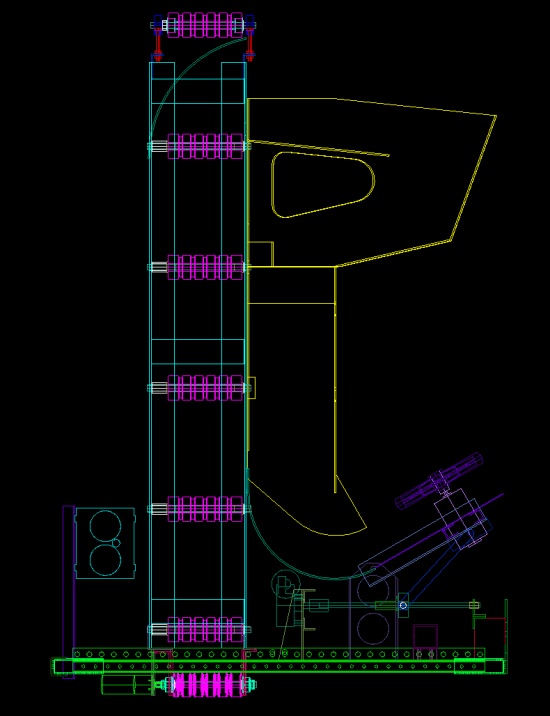Difference between revisions of "DEWBOT II Mechanical"
From DEW Robotics
MaiKangWei (talk | contribs) (→Hopper) |
MaiKangWei (talk | contribs) (→Hopper) |
||
| Line 32: | Line 32: | ||
:Originally designed and built 1.5 Balls wide with a capacity of 7 Balls, it was narrowed to 1 Ball width and a capacity of 5 Balls prior to shipment due to Ball jamming problems. | :Originally designed and built 1.5 Balls wide with a capacity of 7 Balls, it was narrowed to 1 Ball width and a capacity of 5 Balls prior to shipment due to Ball jamming problems. | ||
| − | :Hopper | + | :Hopper floor slope was 5°. |
:The Hopper was easily removable for service. Spare polycarbonate panels were included in our spare parts. | :The Hopper was easily removable for service. Spare polycarbonate panels were included in our spare parts. | ||
Revision as of 11:46, 29 August 2009
DEWBOT II's scoring system is designed to:- Score by shooting balls into the central high goal
- Alternatively score by schooting balls into the low side goals
- Collect balls off the playing field to reload the Shooter's storage hopper
Contents
Overview
Beater Bar
- A high-speed (ungeared Mabuchi RS-545SH2485 on a speed controller) front Beater Bar caught balls and drove them back to the Ball Lift. The Beater Bar also prevented balls from being lost during robot reverse drive. A pair of guides directed the balls into the Ball Lift entrance.
Ball Lift
- The Ball Lift is a vertical conveyor tower having a pair of conveyors: Left and Right.
- Each conveyor comprises:
- (5) 3/8" OD latex tube "cords"
- (7) conveyor rollers
- A Globe Motor direct drive of the bottom-most roller
- A spring tensioner on the top-most roller
- The two driven bottom-most rollers are angled 3° relative to the other rollers, providing a wider opening at the entrance of the Ball Lift thereby allowing easier ball entry.
- The two spring-loaded top-most rollers are separated further appart than the other rollers, loosening the conveyors grip on the balls as a deflector pushes the balls forward into the hopper.
- The right-side driven bottom-most roller is eccentric. This eccentric roller is at the level of the ball center while the balls are on the floor. The eccentric roller causes the conveyor to open to allow balls to easily enter and then to close to grip the balls tightly to lift them. The cycle time of the eccentric roller is the Globe Motor cycle time (0.74 s unloaded). Any balls only partially in the tower are pushed in by the underside of the "ski jump".
- At the tower top, a deflector pushes the balls forward out of the tower and into the hopper. The increased roller spacing at the tower top facilitates this removal.
Hopper
- A Polycarbonate 2-level Hopper was designed and build to store Balls and feed them to the Shooter. (Shown as Yellow in the CAD Diagram at top right)
- Originally designed and built 1.5 Balls wide with a capacity of 7 Balls, it was narrowed to 1 Ball width and a capacity of 5 Balls prior to shipment due to Ball jamming problems.
- Hopper floor slope was 5°.
- The Hopper was easily removable for service. Spare polycarbonate panels were included in our spare parts.
- The Hopper served as our primary swponsor display area.
Ball Chute - Feed Servos - "Ski Jump"
Shooter
Strengths
- Reliability
- Flexibility to target either High or Low goals
- Easy ball collection
Weaknesses
- Low rate of fire
- Difficult and slow to aim
- Small hopper capacity
- Low Shooter position was easy for opponents to block
- Low scoring
